Description
The Beatles’ “Revolver” was a new era album that distinguished itself from previous albums. The Beatles’ musicality, which was an extension of the oldies of the 1950s, still had remnants of that up until around “Beatles for Sale,” and the public treated them as idols. In fact, “Help” was given the Japanese title “Four People Are Idols.” However, the high level of artistry glimpsed in “Help” was deepened in “Rubber Soul,” showing that the Beatles were becoming more than just idols. Until then, they had been touring in parallel with recording, but after stopping touring in 1966, they brought together the best of their studio work to create “Sgt. Pepper’s.” This album was highly praised both at home and abroad, and it is believed that “Revolver” was the catalyst for its production. Indeed, there are reasons for the timing, but not a single song from “Revolver” was performed on stage, and many of the songs would be difficult to reproduce on stage with the technology of the time. The only recording from the same period, “Paperback Writer,” was released as a single, and was only performed on the 1966 tour. The flip side, “Rain,” was played on the reverse side of the tape, which was impossible to perform on stage. The Beatles must have felt the joy and fun of studio production with “Revolver.” They must have thought that if they had taken more time, they could have produced a denser album. This led to the later cessation of touring and the formation of Sgt. Pepper’s. “Revolver” was an album from a period when the band made albums in parallel with touring and in the studio. This album is a title that includes outtakes and various versions. [PAPERBACK WRITER] The recording of “Revolver” took place over a period of about two and a half months from April 6, 1966. The first work to be done was “Paperback Writer” and “Rain,” both sides of The Beatles’ 12th single. This was the first song to use loud speakers to emphasize the bass line, and Paul’s bass became the core of the Beatles’ sound from this song onwards. The April 13th session has takes 1 and 2. Take 1 ends with a breakdown, with Paul muttering “OK, go!”. George and Ringo are also heard giving their opinions to Paul in the studio. Take 2 is completed, but they focus on playing without adding vocals. You can faintly hear Paul singing “Pay-a-ba” off-mic in the break. In the April 14th session, the vocals and chorus are layered on the backing recorded two days earlier. Paul’s vocals were recorded twice separately, and finally layered to create the finished version. The two vocals are recorded separately on this album. The chorus was recorded using the same process, so John’s voice sounds quite clear. The vocals and chorus recorded twice separately were layered on track 7, resulting in a heavy 4×2 Beatles album with eight Beatles. [Rain] “Rain” was recorded on the same day as the aforementioned “Paperback Writer”. This song is known for John’s lazy singing style and the mysterious sound effects that were first used in reverse tape. The highlight is take 5, which does not include John’s main vocals and only the chorus part. Unlike the sticky vocals, you can understand that John’s lively voice in the back chorus supports this song from the back. Although the backing was slowed down to create a slow effect, the vocals were intentionally recorded at a faster tape speed than when they were recorded, and the two were layered together, completing the album using complex techniques other than reverse tape rotation, and I hope you can feel a part of that in this work. Ringo himself praised the drums as his best playing, and Paul’s bass is also superbly original, almost like a lead bass. [TAXMAN] It’s rare for a George song to open an album. Revolver is notable for being the first album to feature three songs written by George. John and Paul recognized George’s late talent. The lyrics are full of George-like irony, such as taxing your feet when you walk through town. In Japan, where the population is aging, securing social security funds has become a political issue, but in the 1960s, the Wilson administration in the UK had already imposed high taxes on the wealthy in order to expand social security funds, and the names of politicians such as Wilson and Heath are included in the chorus. Recording began on April 21st. In “Paperback Writer,” the vocals and chorus were recorded separately twice, and then layered to create a heavy vocal effect, but in “Taxman,” a technology called ADT (Artificial Double Tracking) was introduced for the first time. This was a groundbreaking technique that achieved the same effect by layering the same sound source with a slight shift, and it was a blessing for George, who has a thin vocal line, and John, who found it troublesome to sing repeatedly. Take 11 on track 22 is a short but rare single vocal, and track 23 is a double vocal with ADT processing. The ending is different from the released version, and ends with the title phrase. Paul, not George, plays the lead guitar on this song. The fast playing in the solo is also by Paul. He is so good that George is out of his league. [ELEANOR RIGBY] This was the Beatles’ 13th single, following “Paperback Writer / Rain”. The fact that this song is not rock, and is essentially Paul’s solo song, released as a single gives us a glimpse of the power relationship within the band at this time. Paul still likes to play this song at his current live shows, but in those shows, it is reproduced only by Wicks’ keyboard and the rest of the chorus. The original version also had Paul on vocals, with John and George on chorus. Ringo did not participate in the recording. The accompaniment was only a string octet, and the score was written by George Martin. Paul requested a sound similar to Vivaldi’s “The Four Seasons.” Indeed, it has a bleak atmosphere reminiscent of “Winter” in “The Four Seasons.” Track 1 is a demo recording of Paul singing and playing guitar. The source is unknown, but it was probably recorded at home for everyone to hear. Perhaps Paul was still skeptical of the ADT used by George and John, because in “Eleanor Rigby” he re-sang the vocals four times. In this work, you can enjoy the raw voice of Paul in a single vocal. [I’M ONLY SLEEPING] This song, like “Rain,” is also known for using a tape running backwards as a sound effect. What it has in common with “Rain” is that it was aimed at creating a languid atmosphere, which is especially consistent with the title of this song. In take 1, John sings energetically on an acoustic guitar, contrary to the title. Rather, George in the chorus seems sleepy. Take 2 is somewhat close to the release version, but there is still a rhythm that makes it difficult to fall asleep, and it is interrupted halfway through. Track 14 is take 11 with a new vocal layered on it, and is still a single vocal. When this is taken to take 13, it has a chaotic atmosphere close to the final version, but the tape has not yet been reversed, giving it a refreshing impression. John’s commitment to not finishing it at this point and adding more flavor is visible. An Indian-style guitar is layered on the ending, which becomes a post-it for the next song, “Love You Too”. [LOVE YOU TO] As with “Eleanor Rigby,” outside musicians were invited and the Beatles did not participate in the performance. The album is dominated by Indian instruments such as tabla and sitar, which are Indian instruments to which George would dedicate his life, and the main vocal is of course George. This work includes take 7, recorded on April 13th. [HERE THERE AND EVERYWHERE] Includes takes 1, 4, and 5 recorded on May 26th. Take 1 features Paul’s meltingly sweet vocals. It’s a demo-like finish with a very careful singing voice. No horns have been added yet. Take 4 is a harmony track. Take 14 is take 13 with Paul’s vocals layered on top. It’s a very beautiful vocal, quietly using falsetto. Take 14 is still a single vocal, and another vocal was recorded on June 17th to be layered on top. That’s track 24. Compared to the first vocal, it is a brighter voice that is relatively close to his natural voice, and you can see Paul’s intention of singing by changing his voice tone. [YELLOW SUBMARINE] Ringo’s signature song, not only from the Beatles era. It is the title song of an animated film that was released as a single with “Eleanor Rigby” as a double A-side. Although the credits are traditionally Lennon-McCartney, it is actually Paul’s song. Take 1 of the May 26th session contains a conversation between George, John, and Ringo. George says “Mal!”, which matches the record that roadie Mal also participated in the recording. Take 4 begins with John’s count, and the guitar cutting is very simple, and it is an orchestra recording before the vocals. The following take 5 is Ringo’s vocal track. Ringo sings simply by himself, and the chorus is not dubbed over, so it is truly live singing. Track 34 is a track where John interjects as a drunken sailor. At the session on June 1st, Ringo’s narration was added to the intro. Track 36 is a sound effect track added to the song. Take 5 was the basis, and chorus and sound effects were layered on top of it to create the final version. Tracks 37 to 41 record the process of layering the tracks recorded up to that point. The brass section was recorded on the following day, June 2nd. [SHE SAID SHE SAID] This is a mysterious song by John, in which the influence of drugs is clearly visible. The song was inspired by an episode in which, while on a drug trip with actor Peter Fonda, Peter said, “I know what death is like,” and John interrupted him, saying, “I don’t want to know that.” The title “She” may have been chosen because it sounded good, but it was also intended to conceal Peter Fonda (= He). Apparently, an argument arose between the members during recording, and Paul left the studio in a sulk, so the recording was done by the three of them excluding Paul. While Paul played the guitar on “Taxman,” George played the bass on this song. The first recording was a demo recording of John alone playing acoustic guitar. The melody was unfinished, similar to but different from the final version. The lyrics still say “He.” It’s interesting to see John experimenting with different tempos, melodies, and singing styles. [GOOD DAY SUNSHINE] This is a rare song on “Revolver” that was recorded simply, and Paul is the piano.He sings while playing that guitar, and the other members only participate in the chorus. Paul went solo and re-recorded it for the movie “Broad Street”, and performed it on stage for the first time on the 1989 Get Back tour. However, George Martin plays only the interlude. [AND YOUR BIRD CAN SING] A masterpiece full of a sense of speed. The impressive twin guitars played from the intro are a collaboration between George and Paul. In the April 20th session, dubbing was layered on take 2. John sings relatively seriously, and it is a pretty interesting take, with a break at the “mi~” part that is the key to the chorus. The awkward guitar solo towards the ending is George. Anyway, since the twin guitars of George and Paul are the highlight of this song, it seems that many guitars were recorded on top of each other. The guitar solo in the interlude, which is different from the original, is very interesting. The take in which all the members burst out laughing, which was also included in the anthology, was also recorded during the vocal recording of take 2 on this day. The commentary on the anthology said, “Something interesting must have happened,” but this is a typical symptom of marijuana smoking, and it seems that everyone smoked in the studio, hiding it from George Martin. The song was re-recorded again in the April 26th session. Take 10 includes guitar cutting by John. And the highlight is track 36. John’s vocal track is a single, and it is a wonderful take with his powerful live voice. Compared to the next ADT vocal, it is inferior in terms of thickness, but even without instruments, John’s vocal alone is enough to convey the charm of the song. [FOUR SIDES OF THE CIRCLE] As you can see from the recording date, the album “REVOLVER” was already completed at the time of the Japan performance at the end of June 1966. However, because of the use of complex studio effects, only one song, “Paperback Writer,” which was released as a single, was actually performed on stage. The fact that Paul played on stage after going solo in later years was largely due to the development of equipment, but the fact that Paul played all the songs on this album at his solo concerts proves that this was the period when Paul’s talent was at its peak. The album artwork was also a trial and error project, and initially a circular collage of photos of each Beatle member was considered, and titles such as “FOUR SIDES OF THE CIRCLE” (four sides of a circle) and “ABRACADABRA” were considered, which evoked the image of chaos. Even after the recording was completed, the album title was difficult to decide on, and there is an urban legend that it was inspired by the revolver carried by the police officers on security at the Japan tour. In the end, the album jacket was designed by Klaus Boorman, an old friend of the band. The result was so good that they later asked him to do the artwork for “Anthology” again. This work is the culmination of the studio sessions for “REVOLVER”. ■The ultimate set that includes many debut sound sources that have never been recorded anywhere before. ■It includes longer than the previous releases and the first unedited recordings. DISC ONE 【PAPERBACK WRITER】 April 13, 1966 01. Take 1 (breakdown/Source 1) 02. Take 1 (breakdown/Source 2) 03. Take 2 (complete backing track) April 14, 1966 Overdubs onto Take 2 04. First Lead Vocal & Backings +Guitar fills 05. Bass SI (multitrack) 06. Second Lead Vocal & Backings vocals 07. Mixdown full Take with organ SI 08. RM October 31, 1966 09. RS from Acetate MULTITRACKS 10. Separation process 11. All Vocals 12. Instrumental 【RAIN】 April 14, 1966 13. Take 4 (monitor mix- partial) April 16, 1966 14. Take 5 Lead vocal + Bass SI 15. Backwards Tape 16. Take 5 Tambourine +extra vocals SI 17. Backing vocals overdubs Onto Take 6 18. Take 7 19. RM3 MULTITRACK 20. George Martin on Backwards Tape 21. Drums on front 【TAXMAN】 April 21, 1966 22. Take 11 Single vocal track (partial) 23. Take 11 ADT vocal 24. Lead Guitar + Tambourine SI 25. More Guitar + Backing vocals SI 26. Take 11 with Overdubs April 22, 1966 27. Reduction Take 12 28. Backing vocals remake SI May 16, 1966 29. Intro SI 30. RM 4 June 21, 1966 31. RM 5 & 6 Edit 32. RS 1 & 2 Edit MULTITRACKS 33. Tape Process 34. Instrumental DISC TWO [ELEANOR RIGBY] 01. Demo April 28, 1966 02. Between Takes 1 & 2 (partial) 03. Take 14 April 29, 1966 04. Take 15 Single vocal track 05. Take 15 Paul vocal overdub 06. John & George Backing SI June 6, 1966 07. Paul Third vocal SI 08. Paul Fourth vocal SI June 7, 1966 09. Acetate test mix [I’M ONLY SLEEPING] April 29, 1966 (remake session) 10. Rehearsal 11. Take 1 12. Take 2 (breakdown) April 27 & May 5, 1966 13. Take 11 with SI May 6, 1966 14. Vocals SI on Take 11 15. Vocal overdubs w/Guitar SI May 12, 1966 16. Take 13 RM5 May 20, 1966 17. Take 13 RS 1 18. Take 13 RS 2 19. Take 13 RM6 【LOVE YOU TO】 April 13, 1966 20. Take 7 RM1, 2 & 3 (longer) 【HERE, THERE AND EVERYWHERE】 June 16, 1966 21. Take 7 & Vocal SI from Take 13 22. Take 13 Harmonies SI (partial) 23. Take 14 (Take 13 with vocal SI) June 17, 1966 24. Second Paul vocal & Lead Guitar SI Monitor Mixes from Take 14 25. Composite #1 26. Composite #2 27. Off Line #1 28. Off Line #2 29.. Off Line #3 30. Off Line #4 [YELLOW SUBMARINE] May 26, 1966 31. Take 1 (partial) 32. Take 4 (complete) 33. Take 5 Vocals Inserts SI #1 & #2 34. Take 5 John Vocal Insert SI June 1, 1966 35. Spoken Intro (partial) 36. Sound & vocal effects OVERDUBS ONTO TAKE 5 37. Paul backing vocal SI 38. Additional Backing Vocals SI 39. Backing Vocals with Mal on Bass Drum 40. All vocal tracks (multitrack) 41. Take 5 Alternate Sound effects Mix DISC THREE [YELLOW SUBMARINE] June 2, 1966 01. Rough Remix 1 different Brass tape June 3, 1966 02. Final Brass Band tape mix 03. RM 5 June 22, 1966 04. RS 2 MULTITRACK 05. Instrumental 06. Control Room Monitor Mix EXTRAS 07. 1968 RM 08. 1996 Enhanced Mix [SHE SAID SHE SA ID】 March 1966 HOME DEMOS HE SAID HE SAID SESSION 1 09-Demo #1 10-Demo #2 False Start 11-Demo #3 12-Demo #4 13-Demo #5 HE SAID HE SAID SESSION 2 14. Demo #6 SHE SAID SHE SAID SESSION 3 15. Demo #7 w/False Start 16. Demos #8 & #9 June 21, 1966 17. RM Acetate CHANNEL MIX 18. Left (mono) 19. Right (mono) [GOOD DAY SUNSHINE] June 8, 1966 20. Take 1 with SI (Left Channel Mix Mono) June 9, 1966 21. Overdubs onto Take 1 (Right Channel Mix Mono) June 22, 1966 22. RM7 23. RS1 [AND YOUR BIRD CAN SING] April 20, 1966 SESSION 1 24. Take 2 with Vocal track #1 25. Take 2 Bass, Guitar & Second Vocals SI 26. Take 2 Vocals Overdub #3 w/extra guitar solo SI 27. Take 2 with three vocals and SI (1996 composite) April 26, 1966 RE-MAKE SESSION 28. Take 3 (breakdown) 29. Take 6 (final only) 30. Take 10 cymbal, tambourine& handclaps SI 31. Alternate Guitar SI #1 32. Take 10 RM5 33. Guitar SI #2 re-make (multitrack) 34. Guitar solos comparisons 35. Takes 10 & 6 Unreleased Instrumental April 27, 1966 36. Takes 10 & 6 no ADT vocals 37. Vocals with ADT (multitrack) May 12, 1966 38. RM 7 & 8 for the US May 20, 1966 39. RS 1 & 2 edit for the US 40. RS 1 & 2 edit for the UK June 7 , 1966 41. Acetate Test Mix RM 9 & 10 June 6 & 8, 1966 42. Edit of RM 9 & 10 for the UK MULTITRACK 43. Instrumental
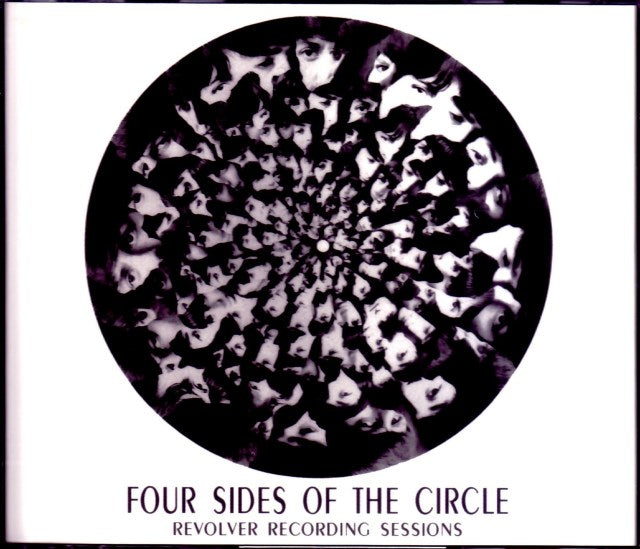

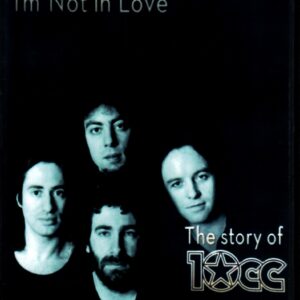
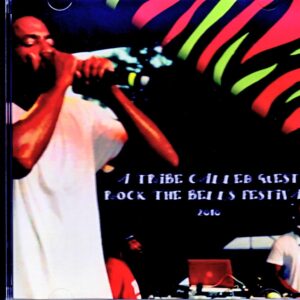
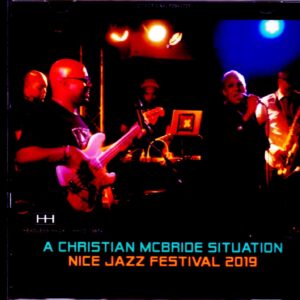
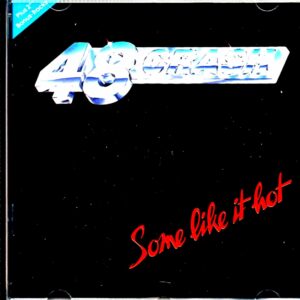
Reviews
There are no reviews yet.